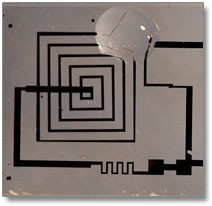Transient Electronics

By Gwen Myslinski
Biomedical engineers at Tufts University in collaboration with researchers from the University of Illinois at Urbana Champaign have developed tiny, fully biocompatible electronic devices that have the ability to dissolve harmlessly into their surroundings after functioning for a precise amount of time.
Technology
Researchers published a paper detailing the creation of these new “transient electronics” in the journal, Science, showing how electronic devices can “fully resorb into the environment at a prescribed time — ranging from minutes to years, depending on the application,” states Fiorenzo Omenetto, a professor of biomedical engineering at Tufts School of Engineering and a senior and corresponding author of the paper. The circuits are made of silicon and magnesium, but are encapsulated in silk protein, which is one of the strongest and most robust materials. “The electronics are designed to be stable and fully-functioning during their lifetime, says Dr. John Rodgers, a professor of engineering at the University of Illinois at Urbana- Champaign.
Each device is only a few tens of nanometers thick and dissolves in a small amount of water or biofluids. There are several factors that go into the dissolution of the device, and yes, one of them is the thickness. Omenetto and his colleagues have discovered how to adjust all of the properties accurately so the device dissolves at the appropriate time and in the correct intervals.
Unlimited Potential
These devices have unlimited potential, and the researchers haven’t begun to unlock all of the possibilities. Some of their uses will help the environment by keeping electronics from piling up in landfills, assist with medical implications by monitoring vital signs or delivering medications to patients.
Classroom Discussion
- Go into further detail on how transient electronics will be helpful with the list already described.
- What are some other potential uses for transient electronics?